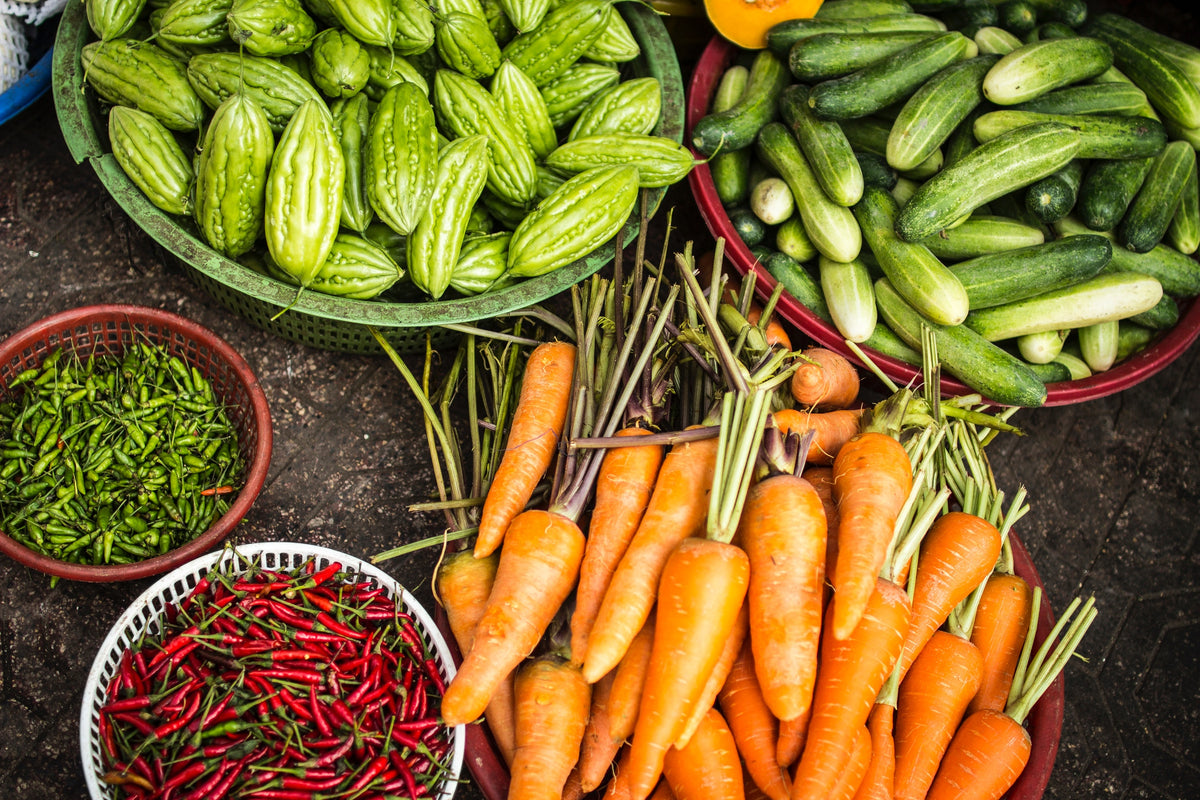Fermented Veggies - Eat 'em up!

You know about Probiotics, right?!
If not, I'm not sure where you've been for the last few years.
Even your doctor and pharmacist has jumped aboard the probiotic train and will tell you that if you take a prescription antibiotic then you should supplement with a probiotic.
Here's why. You need all the beneficial bacteria that lives in your body. Especially the ones that live in your gut. They help you stay well. They make up a powerful part of your immune system.
Paying attention to this one thing can make a huge difference in your health. Your immune system is your first line of defense. It protects you from disease. Bottom line, your immune system is your little soldiers and you are responsible for making sure your soldiers are well nourished. Making and eating your own fermented veggies is the perfect way to do that.
It's delicious and easy too, even though the whole process seems complicated. Fermenting food at home is nothing more than chopping, slicing and dicing your favorite veggies, placing them in a brine for a period and letting the beneficial bacteria develop at room temperature.
The first time I did this I was a little freaked out because I was afraid that I wouldn't want to eat something that seemed like it was going rotten. Here's a tip - if your veggies are crisp and crunch when you eat them, they are perfect. If your veggies have gone soft and mushy, then they are not good. I've never had a batch go bad.
The important thing to keep in mind is that the vegetables should stay submerged all along to prevent mold from forming. Lactobacillus bacteria is a facultative anaerobic category of bacteria, meaning that it doesn’t need oxygen for energy production.
I usually just shred up the veggies I like in my food processor and make a brine (salt water from healthy salt like Real Salt or Himalayan Sea Salt). You don't have to use much salt. I use about 1/2 tsp per quart of veggies. I also like to use fresh celery juice with a little salt instead of water. It helps in the fermenting process.
After I shred up the veggies, I mix them all together and then pour the brine over it and mix it again. Then I put the veggies into quart jars. Make sure to press them in tightly and leave about an inch of space in the top because the veggies will expand.
Then I put a cabbage leaf on top and then screw the lid on loosely. If you screw it on too tight, as the fermentation process happens you might get a little veggie explosion. Not fun to clean up and it will scare the beejesus out of you!
The important thing to keep in mind is that the vegetables should stay submerged all along to prevent mold from forming. Lactobacillus bacteria is a facultative anaerobic category of bacteria, meaning that it doesn’t need oxygen for energy production.
I like to put my quart jars in an empty cooler and let them sit there for 7 days. Sometimes the jars will leak a little as the veggies expand and it's nice to have them in something that is easy to clean. After 7 days, screw the lids on tight, run the jars under water just to clean up anything that has run down the sides and put them in the refrigerator.
You now have homemade fermented veggies that will last for a few months. Hopefully, they won't last that long and you'll eat them up. Enjoy!
Thanks Jane. This is so easy to do and the veg can be spiced up to your liking. No offence Grandma but my taste buds are more advanced then they used to be. I make a red cabbage & beet ferment with coriander, OMG yum.
Plenty of info on the web on other varieties (I made this one up). I originally started fermenting with sauerkraut but could not eat that much of it, then I started the variations and always have some on my plate now. Happy Fermenting!
Great information. Well explained. Thanks for the share.